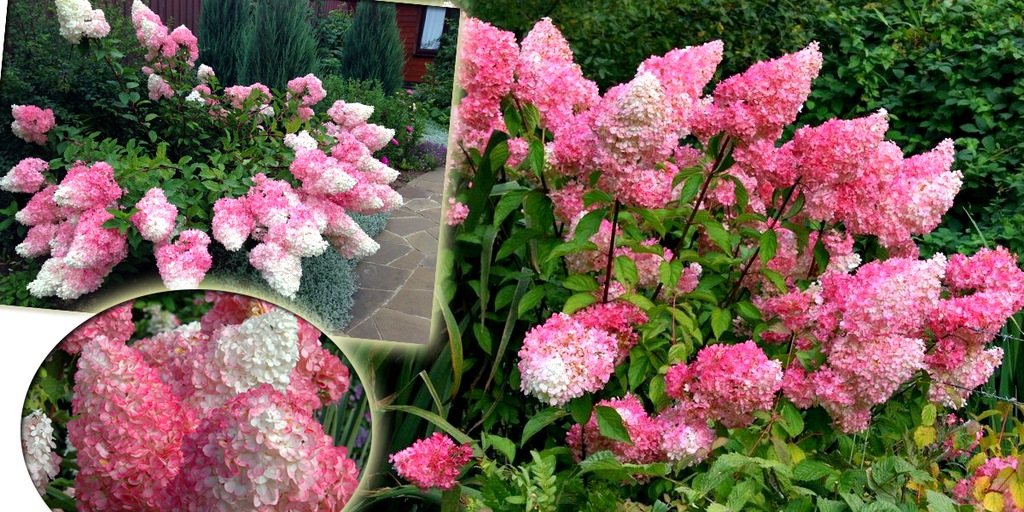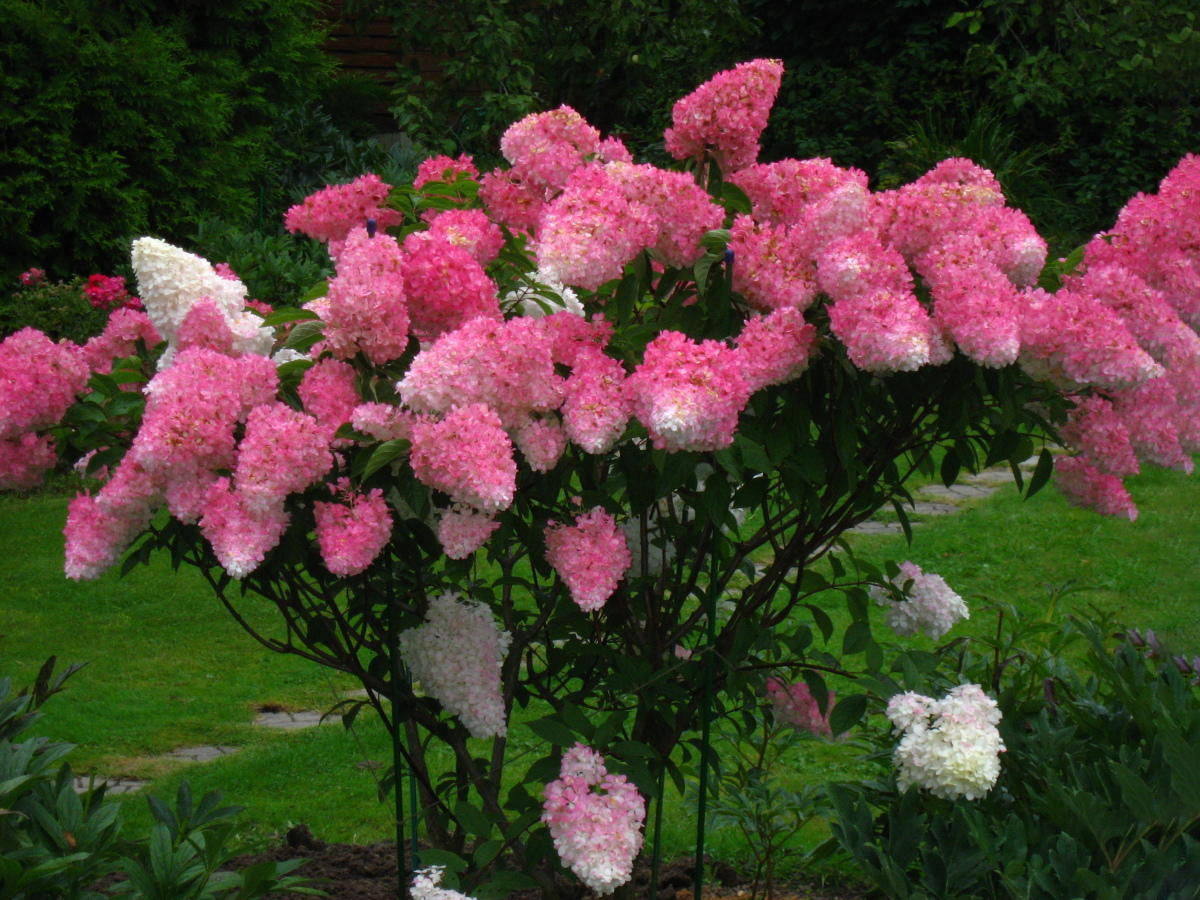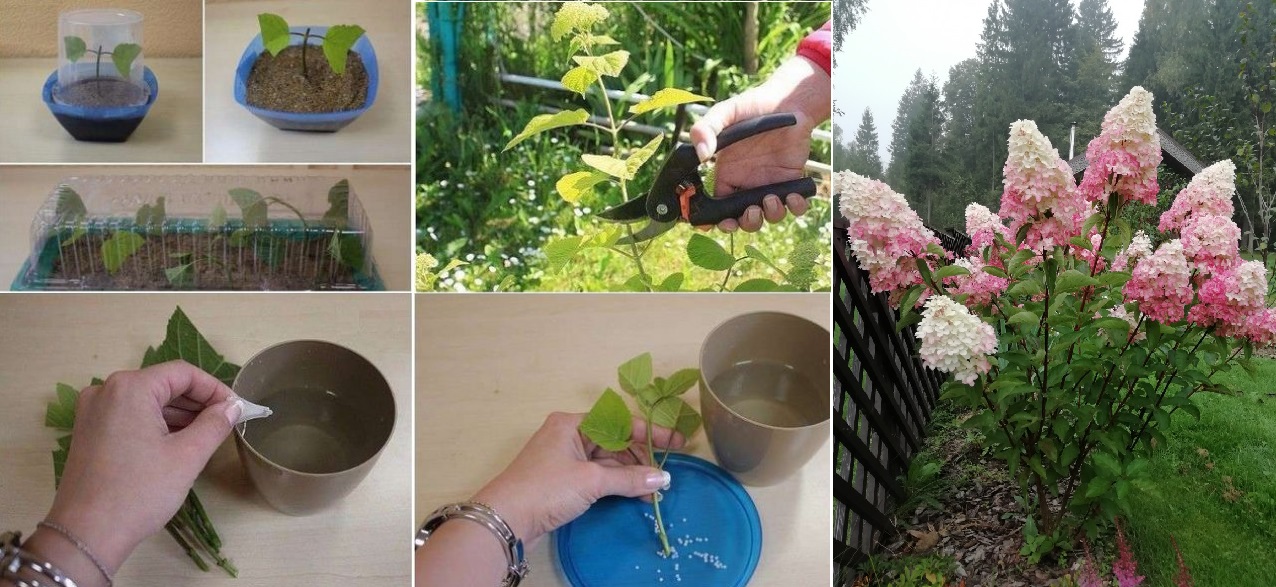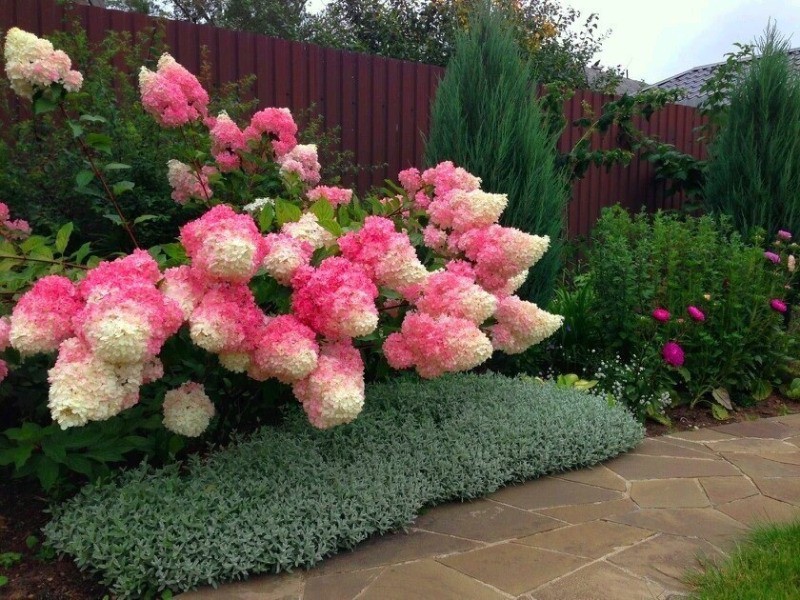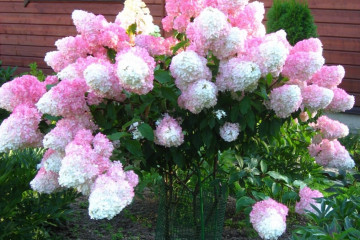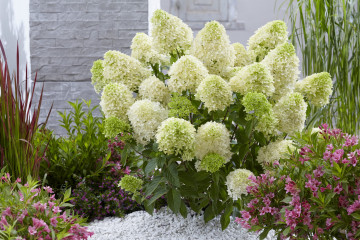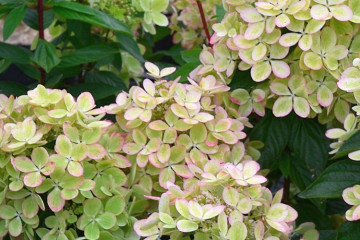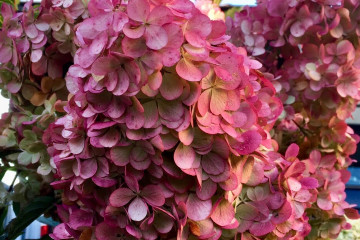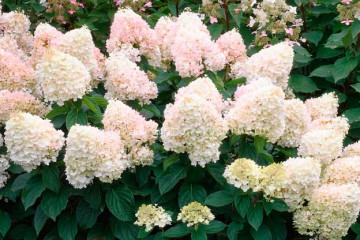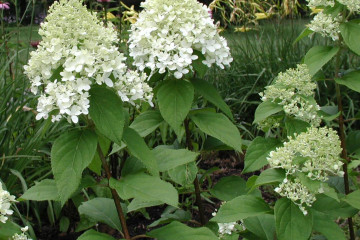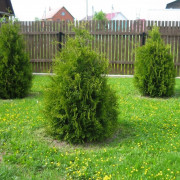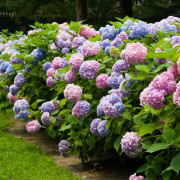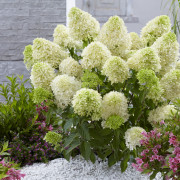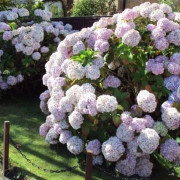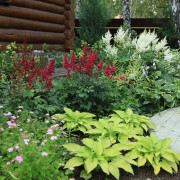Hydrangea Fraise Melba (Hydrangea paniculata Fraise Melba)
Content:
Paniculata hydrangea has many varieties, among which there are quite unpretentious plants. The latter includes the not so long ago withdrawn by Fryz Melba.
Description of the hydrangea variety Freise Melba and its characteristics
Fraise Melba (Hydrangea Paniculata Fraise Melba) is a hybrid variety of hydrangea paniculata bred by French breeder Jean Reno. The plant with lush inflorescences, which is the result of many years of work, was presented to the world in 2014. Due to the uneven color from bright pink to pinkish-cream shades, the flower was named after a strawberry dessert with cream.
The bush of an adult plant consists of straight brown stems without lateral branches and can reach a height of 2 meters. Young shoots are dark red. Leaves are elliptical in shape, with pointed tips and a jagged edge. The inflorescences are large, up to 55 cm in length, openwork, resembling a pyramid in shape. In the process of flowering, the color of the petals changes to a darker one.
It is immune to many diseases and does not require additional care, except for standard agricultural techniques, including watering, fertilizing and pruning. A disease-resistant plant can become sick due to a lack of sunlight, a lack of nutrients, and also due to poor circulation of fresh air.
The variety is characterized by frost resistance. It is adapted for growing in the middle zone and in the harsh climate of Siberia. Able to withstand a temperature drop of up to +35 ℃. In regions where the thermometer can drop to low marks, the plant is covered for wintering.
Planting and further care of the Fraise Melba panicle hydrangea
The most suitable time when the Frazi Melba hydrangea is planted in open ground is the second half of spring. During the summer months, the bush will have time to build up the root system and will better endure the first winter. Seedlings with a closed root system are planted throughout the season as they are less stressed and easier to adapt.
Site selection and preparation
The area for planting hydrangea Frez Melba should be well lit for 6 or more hours a day. When a flower is planted in a shaded corner, the quality of its flowering deteriorates, and there is a risk of developing diseases.
The soil should have a slightly acidic reaction, although the flower feels good in acidic soil. Alkaline earth containing lime can harm hydrangeas. Experienced gardeners mix pine needles or high-moor peat into the soil. In any case, the Frize Melba hydrangea requires a fertile soil that is easily permeable to air and moisture.
How to plant
Hydrangea Fraise Melba is planted in a specific sequence.It is recommended to adhere to the following steps:
- Dig a landing hole 50 cm in diameter and 2 bayonets deep.
- Pour a drainage layer of broken brick or expanded clay 15 cm high at the bottom of the pit.
- On top of the drainage, place a layer of nutritious soil mixture of sod land, peat and sand.
- Carefully transfer the seedling into the planting pit, placing it vertically and carefully straightening the roots.
- Fill the voids with soil, leaving the root collar open.
- Compact the soil with your hands and form a near-stem circle.
- Water the plant abundantly with settled water.
Watering and feeding
Hydrangea Melba prefers moderately moist soil without excessive moisture stagnation. In warm sunny weather, 1 bucket of softened water is poured under the bush twice a week (in the evening). During the rainy season, watering is reduced, focusing on the level of soil moisture.
The flower is fed according to the scheme:
- the first spring fertilizer is humus;
- after 2-3 weeks - a phosphorus-potassium preparation;
- further, every 2 weeks the application of mineral and organic compounds is alternated.
Pruning
In order for Fraz Melba to develop normally, pruning is carried out several times a season. Each of the procedures has its own purpose.
In spring and autumn, sanitary pruning of bushes is recommended. During the event, non-viable shoots are removed, as well as twigs directed inside the crown and thickening it.
A mature bush over 6 years old requires regular anti-aging pruning, in which all old branches that do not form buds are completely eliminated.
Preparing for winter
The Fries Melba variety is not afraid of cold weather and is characterized by increased frost resistance. In preparation for the winter rest, remove all the remaining foliage from the stems of the hydrangea and spud the bush. In harsh climatic conditions, additional feeding with potassium salt with superphosphate is recommended. The plant is mulched and covered with a non-woven cloth.
Reproduction of hydrangea Freesia Melba
The hybrid variety Fries Melba reproduces vegetatively. Planting seeds for seedlings may not give the expected results, since the young plant loses its varietal characteristics. The propagation method by grafting is too complicated for most gardeners. You can get new copies of a flower:
- cuttings;
- dividing the bush;
- laying layers.
At the same time, it is taken into account that the use of the last two methods allows obtaining a limited number of seedlings. Germination of cuttings is considered the most effective option.
Cuttings
When cutting cuttings, experienced gardeners adhere to a number of rules that allow you to get high-quality planting material from a hydrangea bush. It is recommended to follow this sequence:
- In the early morning or in cloudy weather, cut cuttings 10 cm long from young healthy branches of hydrangea.
- Remove the lower leaves from the blanks, and shorten the upper ones by 1/3.
- Tie the sections into a bundle, keep the lower sections in a growth stimulator, and process the upper sections with brilliant green.
- Plant the prepared cuttings in a container with a nutrient substrate from turf, peat and sand, in a ratio of 1: 3: 4.
- The seedlings are covered with a greenhouse and aired weekly.
Diseases and pests, means of combating them
Although the panicle hydrangea variety Fraz Melba is resistant to many diseases, with prolonged waterlogging of the soil and in rainy summers, the risk of infection with powdery mildew increases. In this case, the hydrangea bushes are urgently sprayed with Fitosporin.
Of the insects, the most dangerous is aphid, capable of sucking all the juices from the plant and destroying it. In the fight against the pest, proven drugs are used: Fitoverm, Actellik, Trichopol. Concentrated formulations are diluted in water strictly according to the attached instructions. In the initial stages of infection, you can try to cope with the attack of parasites with the help of garlic infusion.
The use of varieties in landscape design
When creating a unique decor for a personal plot, hydrangea paniculate Fries Melba is often used as part of group compositions. Several bushes of the plant can diversify the recreation area with a gazebo. The tall flower goes well with rhododendrons and perennial phlox.
Fraise Melba hydrangea has outstanding characteristics that allow you to experience no difficulties when growing in your garden. Providing the bush with minimal care, you can get an abundantly flowering perennial plant.
